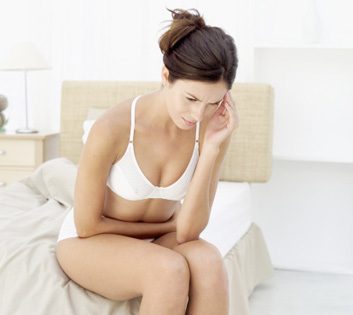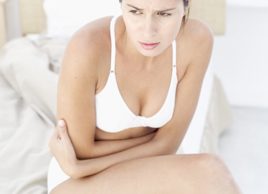
Getting treated for intimate problems
They’re such intimate problems aren’t they? Whether you’re suffering from “peeing-when-laughing” syndrome (a.k.a. urinary incontinence), or excruciatingly painful sex (which is a possible vulvodynia symptom), these issues can be difficult to discuss. Yet they’re quite common: the National Women’s Health Resource Centre says one third of women will be treated for a pelvic-health related disorder by the time they’re 60. Here’s a look at four common conditions.

Bacterial vaginosis
What is it? The Public Health Agency of Canada estimates that bacterial vaginosis, a multibacterial type of infection, is prevalent among 10-30 percent of pregnant women and 10 percent of family practice patients. It also falls into a murky area of whether it’s a sexually transmitted infection (STI) or not. “It probably has something to do with the vagina’s ecology-new sexual partners change the vagina’s bacterial flora, and so can an intrauterine device (IUD),” says Dr. Nicholas A. Leyland, chief of McMaster University’s department of obstetrics and gynaecology in Hamilton, Ont.
What to look for: “Symptoms may include a greyish discharge with odour,” says Dr. Leyland. The discharge can also be white, and have a thin or thick consistency.
Treatment: While a sample of the discharge can be taken to confirm the infection, once diagnosed, antibiotics such as Metronidazole can be prescribed. To prevent bacterial vaginosis, limit your sexual partners (and also practise safe sex) and avoid douching.

Incontinence
What is it? The inability to control your bladder. The Canadian Continence Foundation estimates 3.3 million Canadians are affected by incontinence and according to its Canadian Urinary Bladder Survey, 33 percent of women over the age of 40 experiences it. While aging can be a factor in developing it (bladder muscles can weaken as you age), there are many causes of incontinence including childbirth, constipation, eating certain foods and more.
What to look for: The inability to hold your bladder when you sneeze, cough or jump. Other symptoms include wetting yourself at night or sudden urges to urinate that aren’t always controllable.
Treatment: A physician has to confirm what type of incontinence you have first-it could be stress, urge mixed incontinence or another type. After that, they may suggest pelvic strengthening exercises-including kegels-as well getting down to a healthy weight since extra pounds add pressure to a sensitive bladder. Surgical or medical treatments may also be an option.

Yeast infections
What is it? “Yeast infections are very common-but now with antifungal treatments available over the counter, we often won’t see patients anymore about them,” says Dr. Leyland. Yeast infections, also known as vaginal candidiasis, develop when there’s excessive growth of yeast in the vagina, tipping the normal balance of yeast and bacteria. While a yeast infection can be a one-off event, it can also be a recurring condition. “There are certain circumstances where the body just doesn’t fight off the yeast and it becomes symptomatic,” notes Leyland. “If a woman has an underlying medical problem such as diabetes, yeast can grow because there are higher amounts of glucose in the vagina. Or if she’s on antibiotics, the balance between natural bacteria and yeast is lost so the yeast takes over.”
What to look for: A combination of symptoms including itching, redness in the vagina, burning while urinating and a white discharge.
Treatment: There are a variety of over-the-counter oral and topical antifungal treatments available. “Although anything that’s treated locally won’t be systemically absorbed,” says Dr. Leyland. “So the oral medications would be used as a second line approach.”
In fact, Dr. Leyland suggests non-medicinal alternative treatments for treatment-such as spreading a lacto basillus acidophilus-rich yogurt onto a tampon and inserting it, drinking cranberry juice or stirring in 1 Tbsp of vinegar into an 8 oz. glass of water. All of these solutions are designed to bring back the balance between bacteria and yeast.

Vulvodynia
What is it? According to the Canadian Foundation of Women’s Health in Ottawa, vulvodynia is a moderate to serious pain and discomfort in the vulva region. While it’s not known what exactly causes it, the foundation notes that a number of factors can lead to it including genetics, chronic yeast infections and spasmic pelvic floor muscles.
What to look for: A combination of uncomfortable symptoms including chronic pain (dull and sharp) and itching in the area, burning or raw sensations, general soreness and difficulty with activities such as sex (vulvodynia often makes intercourse painful) and even sitting. Generally, the symptoms should last for some time-think more than six months.
Treatment: Vulvodynia is a complicated condition with many treatment options depending on how severe the condition is and what your physician feels is right for you. It could include anything from topical medications to oral medications to physical therapy to strengthen the pelvic floor muscles.
Related:
• The best remedies for yeast infections
• How to cope when you have vaginitis
• 6 things women do that harm their health
